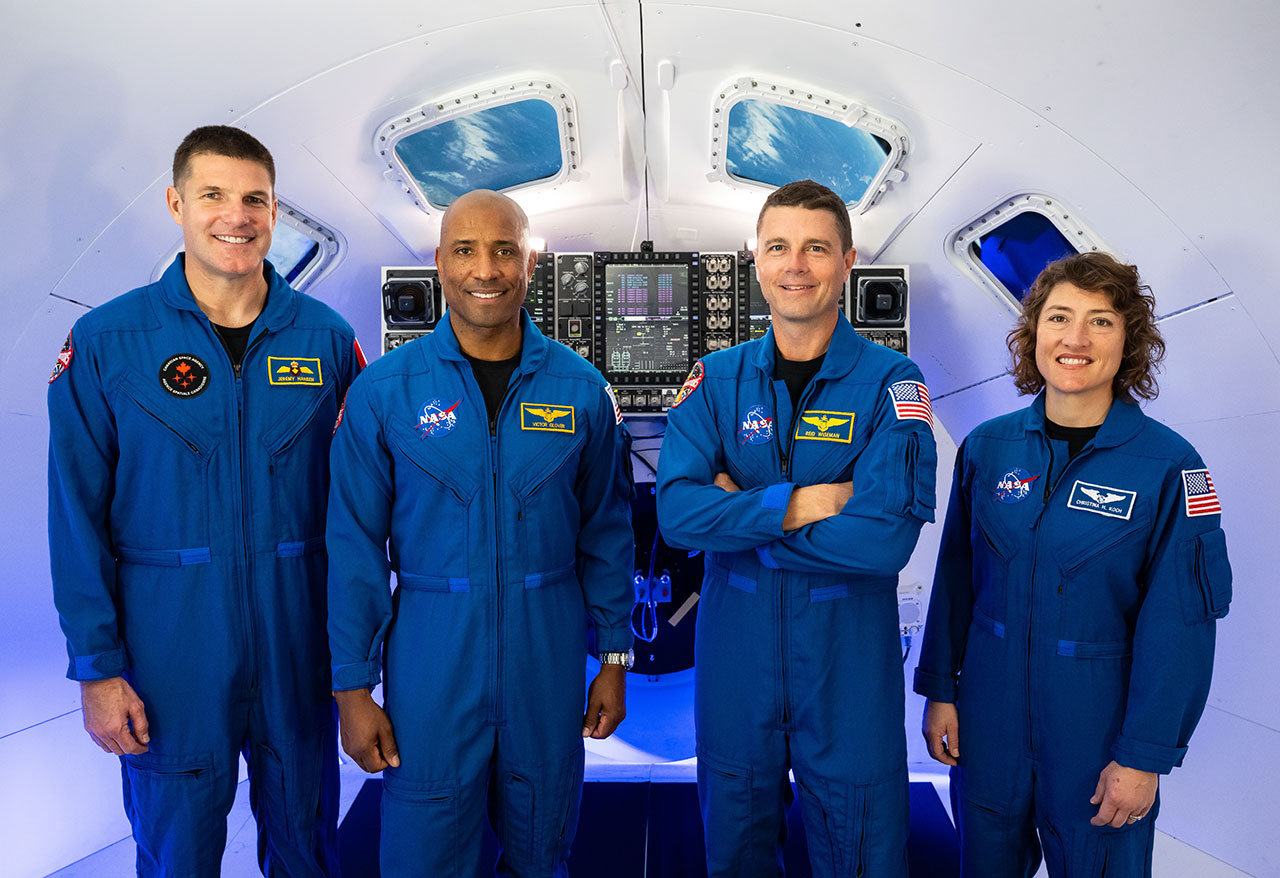
On Monday (April 3), NASA announced the crewmembers of the Artemis 2 moon mission, which will launch astronauts to the moon for the first time since the final Apollo mission in 1972.
NASA astronauts Christina Koch, Victor Glover and Reid Wiseman and Canada's Jeremy Hansen have been selected for the 10-day lunar flyby mission, which will take them farther from Earth than anyone in human history has ever flown. Soon, the crew will begin an intense 18-month training regimen specific to each step of the Artemis 2 mission, which is targeted to lift off in November 2024.
The Artemis 2 astronaut candidate pool, and every astronaut class to date, receives extensive training to prepare for the different aspects of spaceflight, such as practicing spacewalks in the Neutral Buoyancy Lab (NBL) in Houston, a massive, 40-foot-deep (12 meters), 6.2-million-gallon (23.5 million liters) pool that houses a submerged replica of the International Space Station (ISS). NASA has recently used the NBL to train astronauts to work on the lunar surface in low-light conditions similar to those at the moon's south pole, where the Artemis 3 mission intends to land in 2025.
Related: NASA's Artemis program: Everything you need to know
Since the Apollo days, astronauts have taken extensive courses in geology and geoplanetary sciences. In the '60s and early '70s, this training was designed to improve astronauts' understanding of lunar topography and maximize the scientific return of their time spent on the moon's surface. The focus shifted more to Earth science after Apollo, during the Skylab, space shuttle and ISS era (which is ongoing). But now, astronauts are training to study the moon's surface once again.
With the four Artemis 2 crew members chosen, individualized flight suits can be created while the group starts training inside the Orion capsule. The crew will begin their intensive training beginning in June. Alongside them, flight control teams will begin simulations covering every scenario of each step of their mission, from boarding Orion for launch to exiting the spacecraft once it splashes down in the Pacific Ocean 10 days later. The crew will also receive group training in communication to better bond them as a cohesive team.
NASA is targeting November 2024 for the launch of Artemis 2, which will be the second flight of the agency's huge Space Launch System (SLS) rocket and the third for Orion. (The duo flew together late last year on the uncrewed Artemis 1 mission to lunar orbit, and Orion made an uncrewed trip to Earth orbit back in 2014.)
In Earth orbit and around the moon, the Artemis 2 crew will test Orion and its service module's systems, maneuverability and handling — all of which the four astronauts will practice in simulations ad nauseam over the next 18 months.
Between now and launch, the Artemis 2 crew and other teams at NASA will address mission parameters, spacecraft system performance checks, guidance system calibrations and countless other tests in order to prepare. They will undergo extensive hands-on training in the operation of Orion, the SLS, other launch hardware and specific scientific experiments they'll need to operate during the mission.
In addition to the human element, much of the hardware for Artemis 2 still awaits full assembly. Computer modules from the Artemis 1 Orion capsule have already been successfully transferred to the Artemis 2 Orion, and the launch vehicle's booster segments sit complete in storage at NASA's Kennedy Space Center (KSC) in Florida.
The Artemis 2 SLS core stage is currently still at the agency's Michoud Assembly Facility in New Orleans. Once it's shipped to KSC later this year, the full vehicle will undergo stacking.
Follow us on Twitter @Spacedotcom or Facebook.







